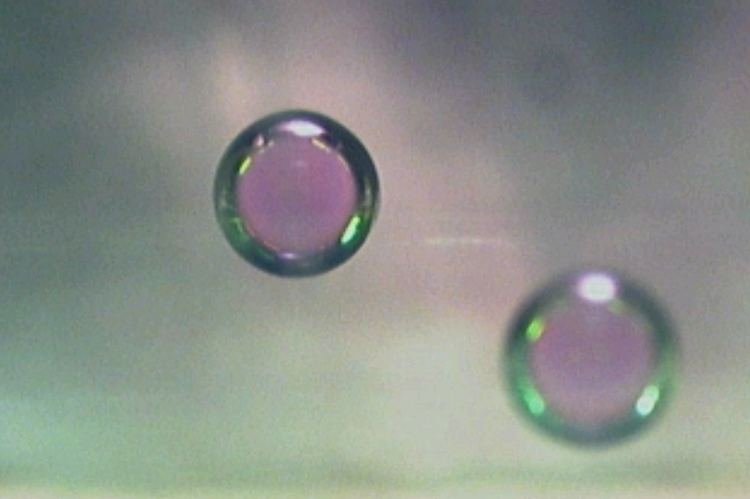 | ||
An antibubble is a droplet of liquid surrounded by a thin film of gas, as opposed to a gas bubble, which is a sphere of gas surrounded by a liquid. Antibubbles are formed when liquid drops or flows turbulently into the same or another liquid. They can either skim across the surface of a liquid such as water, in which case they are also called water globules, or they can be completely submerged into the liquid to which they are directed.
Contents
Differences between air bubbles and antibubbles
The behavior of antibubbles differs from that of air bubbles in three primary ways, and provides a ready means of identification:
Potential uses for antibubbles
If antibubbles can be stabilized they can be used to form a long lasting froth — antifoam. Possible uses for antifoam are as a lubricant or using the thin passageways permeating antifoam as a filter for air or other gasses.
Antibubbles themselves could be used for chemical processes such as removing pollutants from a smokestack. Replacing the air in antibubble shells with another liquid could be used for a drug delivery system by creating a shell of liquid-polymer around a drug. Hardening the polymer with ultraviolet light would create a drug filled capsule.
Lifetime
The lifetime of surface antibubbles can be prolonged indefinitely by making the water under them vibrate. These are called "walking bubbles" and are used as a model of quantum mechanical behavior.
